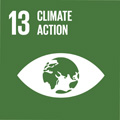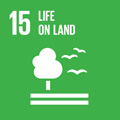- Docente: Barbara Mantovani
- Credits: 8
- Language: Italian
- Teaching Mode: Traditional lectures
- Campus: Bologna
- Corso: First cycle degree programme (L) in Biological Sciences (cod. 8012)
Learning outcomes
Basic knowledges on the Animal Kingdom: its biodiversity with special reference to body plan, metabolic functions, reproductive strategies, phylogeny and evolution .
Course contents
Animal origin and evolution. Classification, systematics and phylogeny. Animal bauplan and metabolic functions (body symmetry, cellularity, germ layers, body cavities; locomotion and support; feeding mechanisms, excretion and osmoregulation, circulation and gas exchange; nervous systems and sense organs; hormones and pheromones; reproduction). Animal development and life histories.
Some general aspects of heterotrophic Protista.
The Animal Kingdom: Placozoa, Porifera (Exactinellida, Calcarea, Demospongiae), Cnidaria (Hydrozoa, Scyphozoa, Anthozoa), Ctenophora, Platyhelminthes (Turbellaria, Trematoda, Cestoda), Nemertea, Mollusca (Caudofoveata, Solenogastres, Polyplacophora, Gastropoda, Bivalvia, Scaphopoda, Cephalopoda); Annellida (Polychaeta, Clitellata); Rotifera, Acanthocephala, Gastrotricha, Nematoda, Nematomorpha, Kinorhyncha, Priapula, Loricifera, Onycophora, Tardigrada, Arthropoda (Chelicerata, Myriapoda, Crustacea, Hexapoda); Lophophorata (Phoronida, Brachiopoda, Bryozoa), Echinodermata (Crinoidea, Asteroidea, Ophiuroidea, Echinoidea, Holothuroidea), Hemichordata, Chordata (Tunicata, Cephalochordata, Vertebrata), Metazoa incertae sedis.
Readings/Bibliography
Zoologia - Generale; Balsamo et al., Casa Editrice Idelson Gnocchi, 2012
Zoologia - Sistematica; Balsamo et al., Casa Editrice Idelson Gnocchi, 2010
Teaching methods
frontal lessons; didactic laboratory observations
Assessment methods
The assessment will take place through a written examination for the identification of three animal samples and the answer to three specific questions, followed by an oral one with more general questions.
Teaching tools
.ppt presentation; laboratory exercise
Office hours
See the website of Barbara Mantovani
SDGs


This teaching activity contributes to the achievement of the Sustainable Development Goals of the UN 2030 Agenda.
